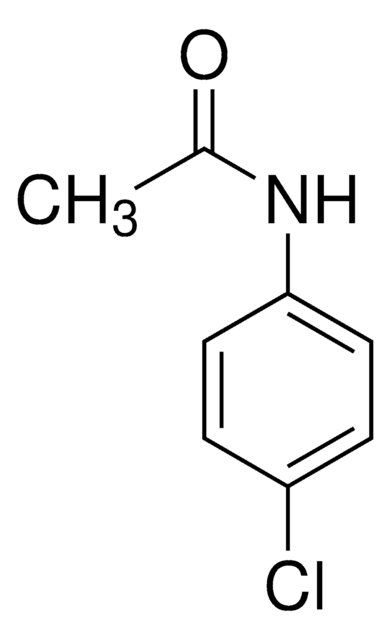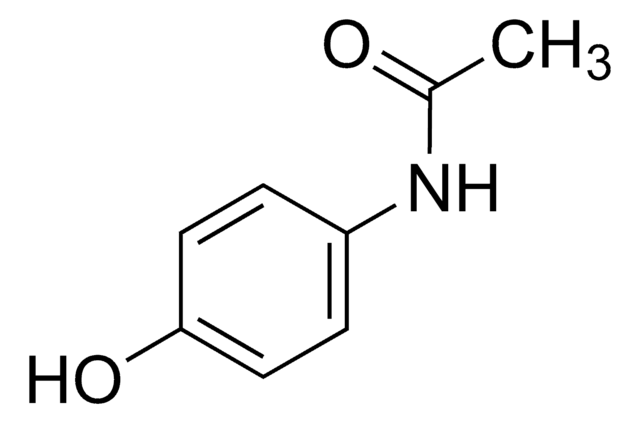P0300000
Acétaminophène
European Pharmacopoeia (EP) Reference Standard
Synonyme(s) :
4′-Hydroxyacétanilide, 4-Acétaminophène, N-(4-Hydroxyphényl)acétamide, N-Acétyl-4-aminophénol, APAP, Paracétamol
About This Item
Produits recommandés
Qualité
pharmaceutical primary standard
Description
API family: acetaminophen
Famille d'API
paracetamol, acetaminophen
Fabricant/nom de marque
EDQM
Technique(s)
HPLC: suitable
gas chromatography (GC): suitable
Pf
168-172 °C (lit.)
Application(s)
pharmaceutical (small molecule)
Format
neat
Chaîne SMILES
CC(=O)Nc1ccc(O)cc1
InChI
1S/C8H9NO2/c1-6(10)9-7-2-4-8(11)5-3-7/h2-5,11H,1H3,(H,9,10)
Clé InChI
RZVAJINKPMORJF-UHFFFAOYSA-N
Informations sur le gène
human ... FAAH(2166) , PTGS1(5742) , PTGS2(5743) , TRPV1(7442)
Vous recherchez des produits similaires ? Visite Guide de comparaison des produits
Description générale
Application
Conditionnement
Autres remarques
Produit(s) apparenté(s)
Mention d'avertissement
Warning
Mentions de danger
Conseils de prudence
Classification des risques
Acute Tox. 4 Oral
Code de la classe de stockage
11 - Combustible Solids
Classe de danger pour l'eau (WGK)
WGK 1
Point d'éclair (°F)
364.3 °F - Pensky-Martens closed cup
Point d'éclair (°C)
184.6 °C - Pensky-Martens closed cup
Faites votre choix parmi les versions les plus récentes :
Certificats d'analyse (COA)
Désolés, nous n'avons pas de COA pour ce produit disponible en ligne pour le moment.
Si vous avez besoin d'assistance, veuillez contacter Service Clients
Déjà en possession de ce produit ?
Retrouvez la documentation relative aux produits que vous avez récemment achetés dans la Bibliothèque de documents.
Les clients ont également consulté
Articles
Separation of Acetaminophen, meets USP testing specifications, 98.0-102.0%, powder; Caffeine, meets USP testing specifications, anhydrous; Benzoic acid, meets USP testing specifications; Aspirin, meets USP testing specifications
Protocoles
Separation of Maleic acid; Acetaminophen; Caffeine; Naproxen; Ibuprofen
Notre équipe de scientifiques dispose d'une expérience dans tous les secteurs de la recherche, notamment en sciences de la vie, science des matériaux, synthèse chimique, chromatographie, analyse et dans de nombreux autres domaines..
Contacter notre Service technique







